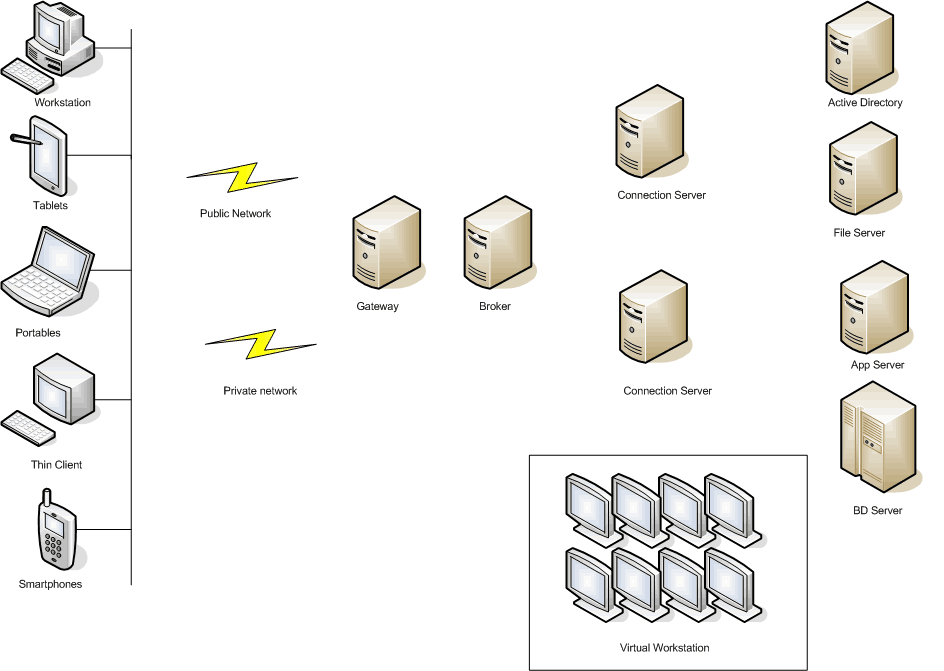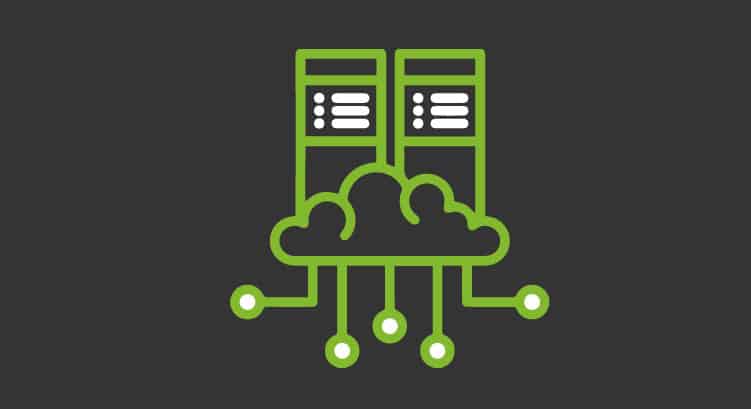VDI Monitoring: All you need to know to face the Challenge
The decision to introduce Virtual Desktop Infrastructure (VDI) technology is not an easy one. One of the most important aspects to consider is precisely the administration and monitoring of VDI.
From the point of view of the monitoring analyst the approach to this issue is direct: if VDI is part of the platform and we have users who access applications from a virtual desktop, it is clear that this technology must be monitored.
Now, how often are we going to come across a platform that includes VDI?
In reality, the prevalence of VDI technology is an issue that has provoked debate; on the one hand, less optimistic analysts have indicated a slowing of technology adoption rates, and on the other hand, there are those more optimistic who speak of little adoption but a high level of satisfaction.
However, just over a year ago Allied Market Research staff published a study estimating that cloud-based VDI will experience an annual increase in its market value to over ten billion dollars by 2023.
Another interesting point of this report is that it indicates that the adoption of VDI will be evident not only in large companies, but predicts a significant upturn in the sector of small and medium enterprises.
In this scenario it is interesting to evaluate the challenges that VDI implies for monitoring, so in order to approach the subject we propose you first to evaluate its architecture and determine the problems that we will have to face.
VDI architecture and associated problems
Let’s use as reference the general architecture presented in the following image:

The architecture of a VDI platform starts from a first level where we find a wide variety of devices from where users can establish communication with the virtual machine that contains the appropriate environment for each of them.
The variety of devices, which range from workstations to smart devices such as phones and tablets, generate one of the first challenges: operational problems.
We can have users opening support cases indicating that:
- Once connected the user interface does not work properly.
- Being in a remote location they cannot access the same applications that are connected in their office.
- They are unable to print using the locally available printer, etc.
Then, at the communications level, we can also find different schemes, from a local Ethernet network located in the same building as the data centre where the elements with which VDI is implemented are found, to the Internet services of a hotel.
This point includes all the active elements that make up the network; we refer to switches, routers and firewalls.
This brings us to the level of VDI devices. Which devices and what their respective targets are depends on each manufacturer; however, we can mention three functions that usually appear regularly:
- Gateways: Control secure access to virtual machines that serve as virtualized desktops. This control may vary in scope depending on whether the communication comes from a secure or unsecured network.
- Brokers: They control which virtual machine a certain user must access.
- Connection Servers: Servers whose hypervisors allow the creation of virtual desktops.
At this point we may come across the famous Connectivity Problems in which users often report things like that:
- They can’t connect.
- Once connected from a remote location they don’t get the same level of performance as when they connect from their office.
- The keyword they use regularly doesn’t work if they are connected remotely.
- Depending on the location where they connect, they do not have access to the same systems or the same data, etc.
- Finally we can consider a level of access to corporate resources, which involves all services and equipment access to applications and data such as servers, storage devices, active directory, etc.
Related to these last levels we have the possible infrastructure problems, which are related to the fair provisioning of resources such as CPU, memory and storage.
Here it is interesting to get that fair value for each virtual machine, since a deficit of resources can go directly against the performance observed by end users and an over dimensioning can involve waste of resources and the consequent economic problem.
VDI Monitoring: Objectives
Defining a monitoring platform that supports the resolution of the three types of problems mentioned (Operatively, Connectivity and Infrastructure) must be based on:
- Providing the necessary visibility within VDI’s own platform (Hypervisor, virtual machines, gateways, brokers, etc.).
- Providing visibility of the entire platform (networks, communications links, routers, servers and applications).
Assuring us these levels of visibility the idea is to generate the monitoring processes from two approaches:
- On the one hand we can develop a vertical vision in which the main challenge is that, given a failure report, the monitoring platform facilitates the discernment of whether it is a problem of the VDI infrastructure or a problem of the general platform.
- On the other hand, a horizontal vision that should support resource adjustment and capacity planning processes.
VDI Monitoring: Tools
The VDI market offers a considerable range of products aimed at the administration and monitoring of this type of platform. We can classify them into three groups:
- Tools from VDI solution producers: Companies such as Citrix and VMware have management and monitoring products that accompany their products.
These management and monitoring products are usually based on a licensing scheme that distinguishes between small and larger installations. Their simpler versions tend to be more administration oriented than monitoring oriented.
However, for medium to large installations, additional licenses are offered with which monitoring elements such as Application Monitoring and Workload and Time Behaviour Monitoring are provided. - Another option is the tools specially designed to manage and monitor VDI platforms.
These tools in general present an offer that allows the development of a hybrid structure; with data collection through elements present in the user’s platform, having in the cloud the consolidation of said data and the possibility of evaluating it and carrying out the analysis.
Of course, in terms of licensing and service levels offered the options are very diverse, both in the capacity they deliver and in the costs they involve.
We can mention tools such as ControlUp, ExtraHop or Goliath, as a guide to introduce you into the subject. - A third option is the general purpose monitoring tools.
An organization that already has Pandora FMS, for example, when undertaking a VDI project, will be able to face the challenge of VDI monitoring as an extension of the competences of its monitoring platform.
For example, the monitoring developed in the area of applications or user experience should consider that there is a whole new structure through which certain users will access the application.
Therefore, the parameters that are measured in terms of evaluating the performance of the platform should be extended to include, among others, variables such as:
- Response time on the VDI connection (including connection and authentication).
- Network response time for VDI connections.
- Application response time for VDI connections.
It is also interesting to think about the natural extension of the capacities already developed in terms of data centre monitoring, where the management and administration of computer resources is fundamental.
The reader interested in Data Centre Monitoring will find this article published in this blog interesting.
In short, the basis for successful VDI monitoring is based on:
- On the one hand, in the ability to monitor any system provided by Pandora FMS architecture, and all the capabilities for monitoring virtualization platforms, our data centre, applications, and so on.
- On the other hand, knowledge about the chosen VDI architecture is required, which will allow us to understand the flow of transactions, key operational elements, etc., in order to adjust the monitoring platform.
With these two elements and considering the type of problems that the VDI platform can generate, it is possible to cover the VDI infrastructure in an efficient way through Pandora FMS.
Of course, we invite you to request information about how Pandora FMS can support you in the implementation of a VDI monitoring platform, in this link.



















